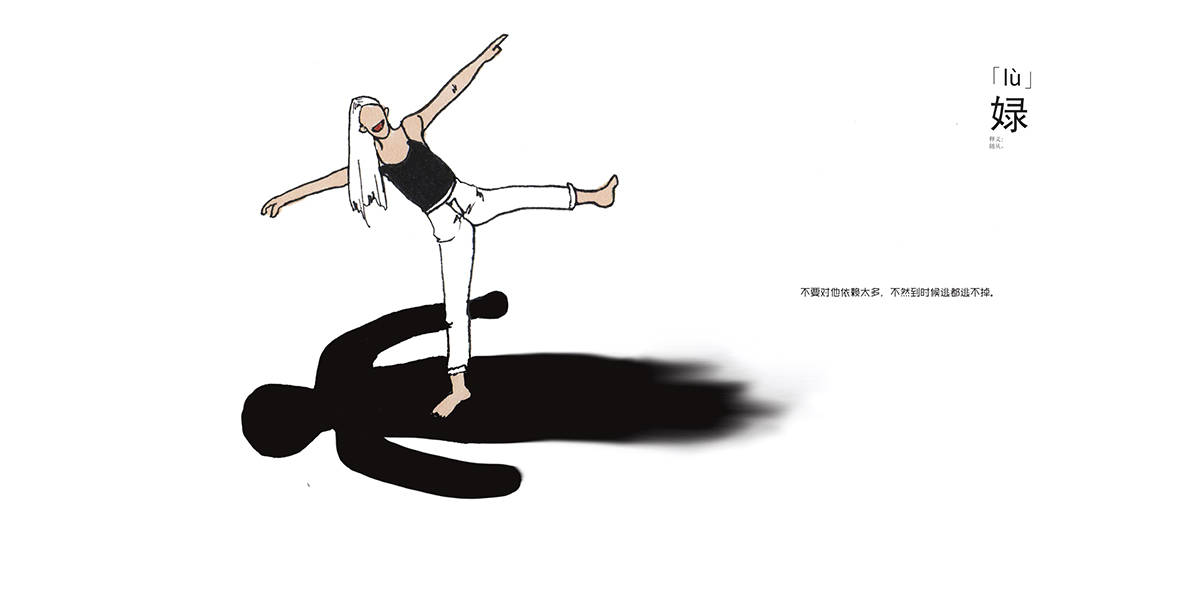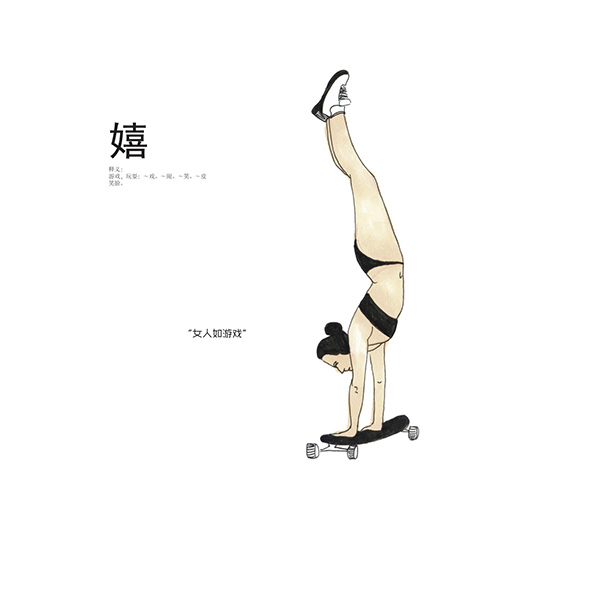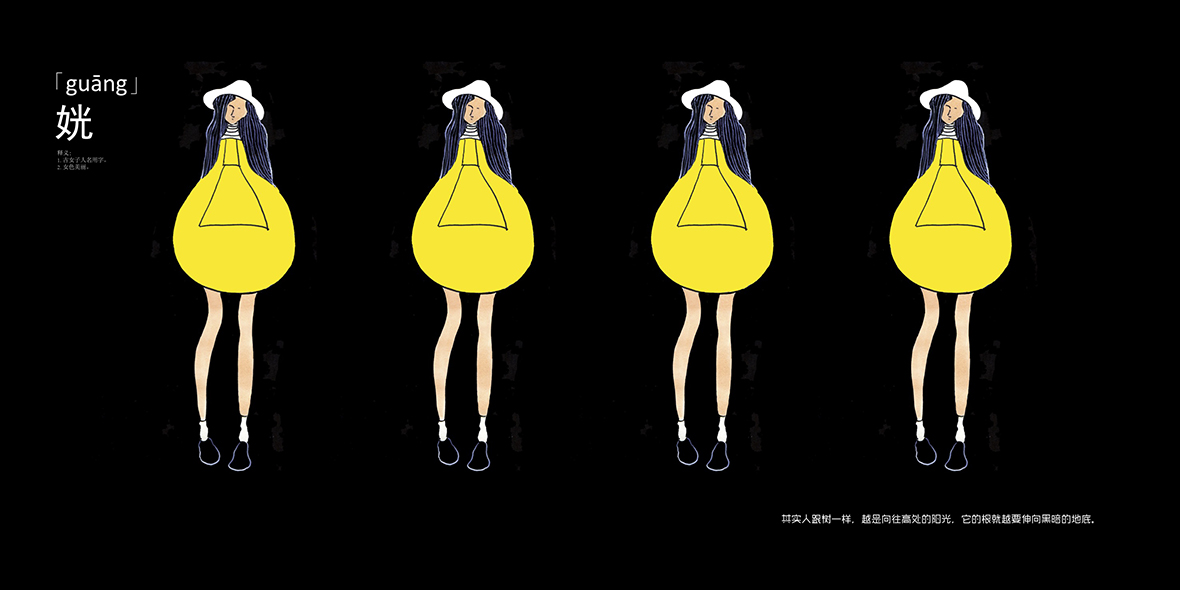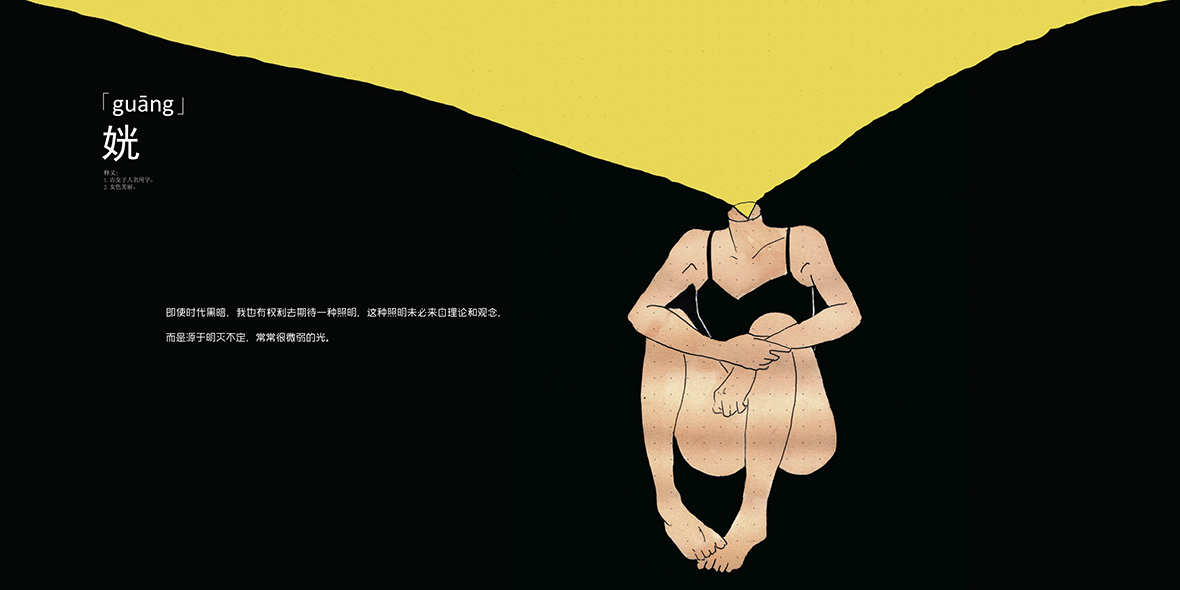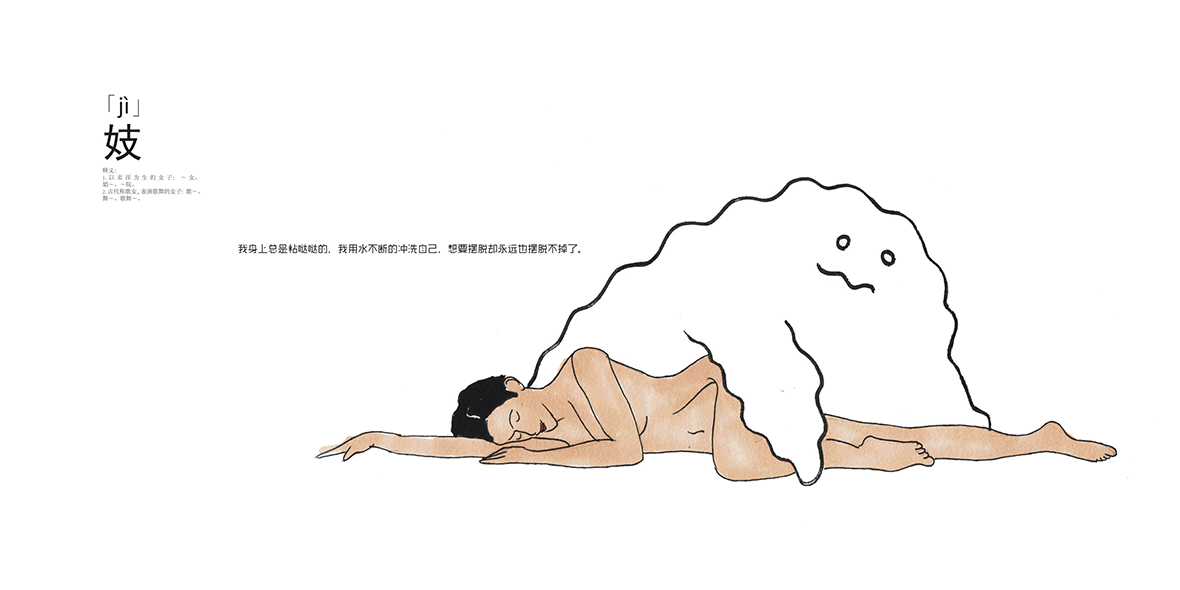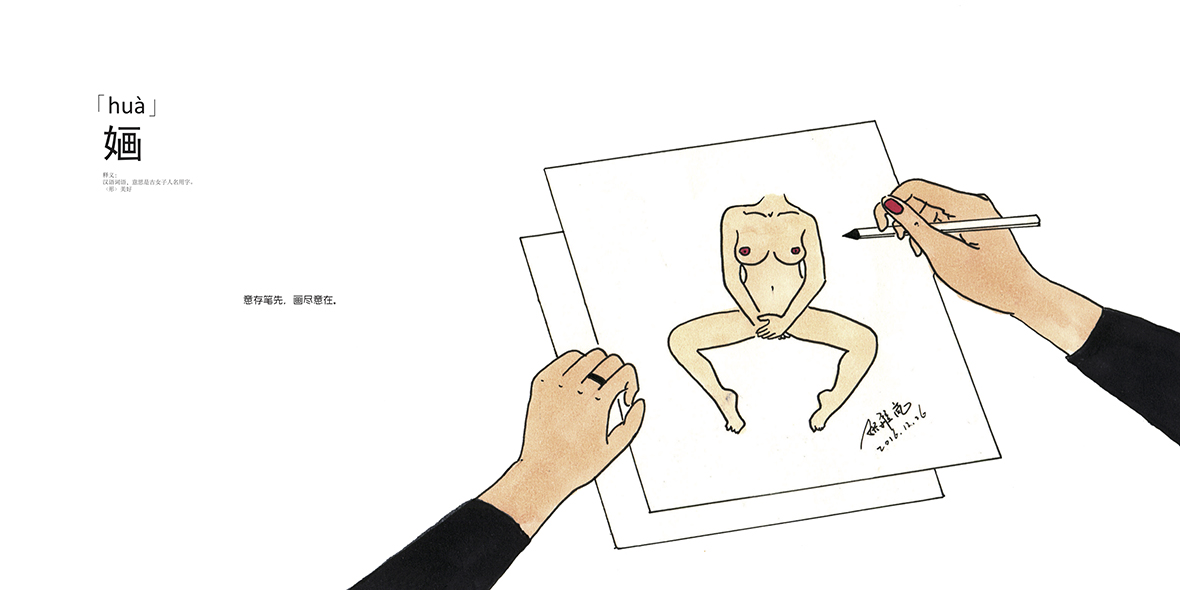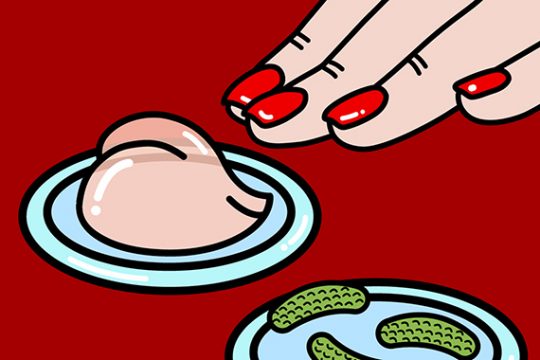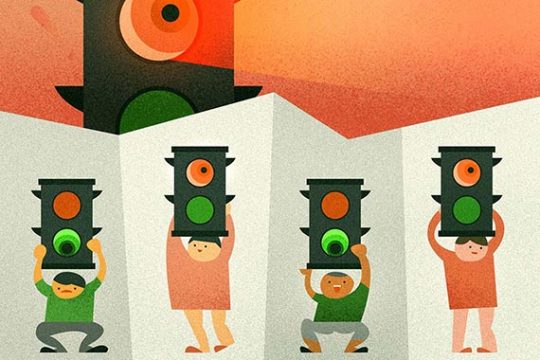
"I lift the mountain, as the moon in the sky watches me, and the stars blink."
Inspired by the Chinese character nǚ 女, which translates to “female” in English, 90s-born Chinese illustrator Zhang Yalan created a series of illustrations dissecting the word’s usage. The nǚ character is a common radical (a root character in the Chinese language that convey semantic or linguistic information) that’s used as a component in a wide range of other words, including hao 好 (good), tā 她 (her), zhuāng 妆 (makeup), xìng 姓 (forename), nú 奴 (slave), fù 妇 (wife), and jì 妓 (prostitute), among many others. The series, which began as a university graduation project, now consists of over 100 illustrations.
这是一系列都以“女”偏旁的汉字作为创作灵感的作品:好、她、妆、姡、姓、奴、妇、妓……已有100多个这样的“女”字,被90后插画家张雅岚加之以自己的插画解读,并做成了她的毕设作品。
From describing beautiful and elegant women to lewd prostitutes, characters using nǚ as a radical are able to communicate both positive and negative meanings
However, Zhang has observed the majority seem to lean towards the latter and is indicative of a larger societal issue. “Did this phenomenon come about due to how Chinese history and society developed with a predominantly misogynistic attitude?” she asks. “That question, along with my observations of gender inequality issues in modern times, is what motivated me to create this series.”
这些在汉语书面语中随处可见的“女”旁汉字,存在着褒义字,中性字和贬义字:温良优美如姝婷,风骚不检如娼妓。
张雅岚觉得,这些不同词性的词寓含了太多深刻的意义,“这其中是不是因为中国历史文化发展中社会对女性地位及对待女性态度中存在着歧视?再结合上现如今男女不平等的社会问题,就激发了我以‘女’旁汉字来解读性别歧视的灵感。”
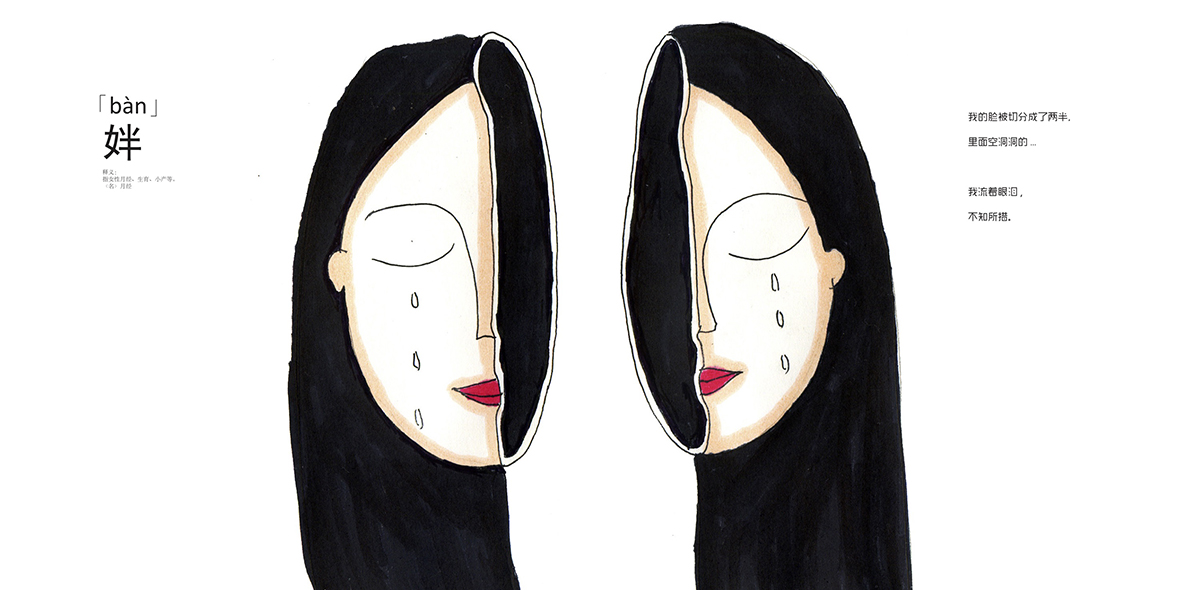
"I cut my face into two parts, inside I find it’s empty… I cry, I don’t know what to do."
Zhang admits that her decision to create this series is naturally relevant to her own identity as a female. “It doesn’t matter if it’s male discrimination towards women or women’s self-deprecating attitudes towards themselves. Traditional Chinese society hasn’t addressed these topics and most people will choose to ignore or avoid them.”
So this begs the question, how do you create a discourse around gender inequality and encourage more people to participate in the discussion? These are the questions that Zhang attempts to answer through her series: “I didn’t create this series out of enjoyment. I hope that my illustrations will allow more people to become aware that these kinds of issues exist.”
张雅岚承认之所以创作这系列的作品,和她自己身为女性也存在着一定关系。“无论是男性对于女性的歧视也好,或者源于女性自身的自卑也罢,中国人的传统观念对于性别的话题是很隐晦的,大部分人都会选择性地无视或回避。”
那么,如何让读者能够被作品所吸引,并且在观看中产生自己的思考?这就是张雅岚在创作中一直在探索的问题。“我创作这个主题的作品并不是想要自娱自乐,我希望通过我的插画让更多人能够直视性别歧视这个问题。”
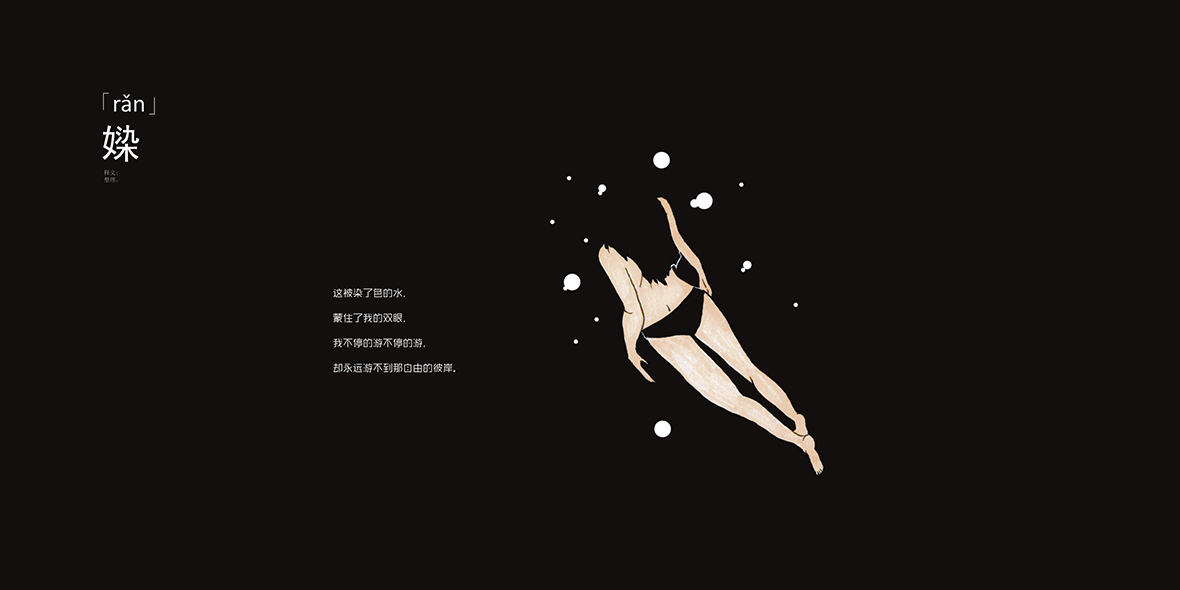
“Throughout thousands of years of a patriarchal society in China, women have depended on their own efforts to improve their positions and gain respect,” Zhang comments. “[…] I believe that to make progress on the issue of gender inequality, we can only begin with ourselves. Only after we realize that the problem exists can we begin to analyze the situation, work at these problems, and begin to implement change.”
“我相信,性别歧视这类问题必须以自身出发,在中国几千年的男权思想影响下,女性只能靠自己的努力来争取社会地位和认可……只有开始做到直视歧视问题,才能分析环境,解决问题,从而改变现状。”
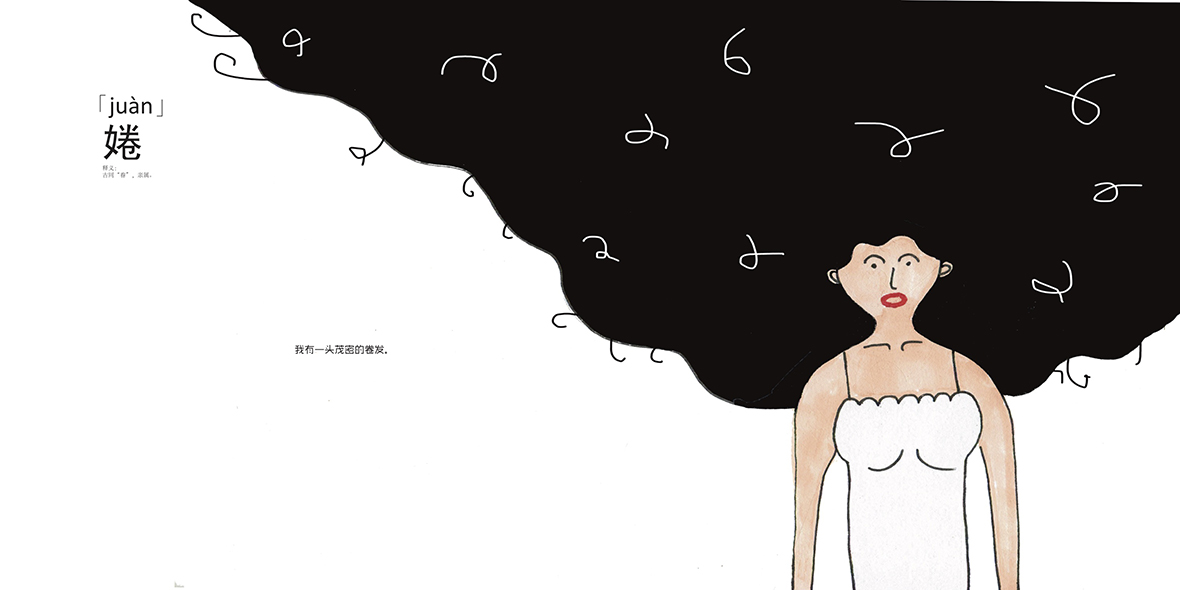
"I have a head full of curly hair."
Although nǚ is one of the most common character components in the Chinese language, a pronoun specifically for referencing females did not become widely adopted until the early 20th century. But does this etymological evolution truly help us advance towards gender equality? Or on some level, is it only widening the divide between men and women?
From the connotative qualities of words formed with nǚ to the late adoption of gender-specific pronouns, a close examination of the Chinese written language is a revealing look at how gender inequality still remains a prevailing issue around the world.
其实正如张雅岚所关心的问题一样,“女”字作为汉字中最大的偏旁部首之一,其中代指女性第三人称的“她”字,却直到20世纪上半叶随着现代汉语的普及才真正诞生。但特指女性的代词是否能够体现女性地位的平等?还是在某种程度上再次割裂了男女性别呢?
也许“她”字所引发的女性社会地位之争,正如所有“女”旁汉字的所面临的相同,唯有从汉字的构造和词义解读中才得以窥见一斑。
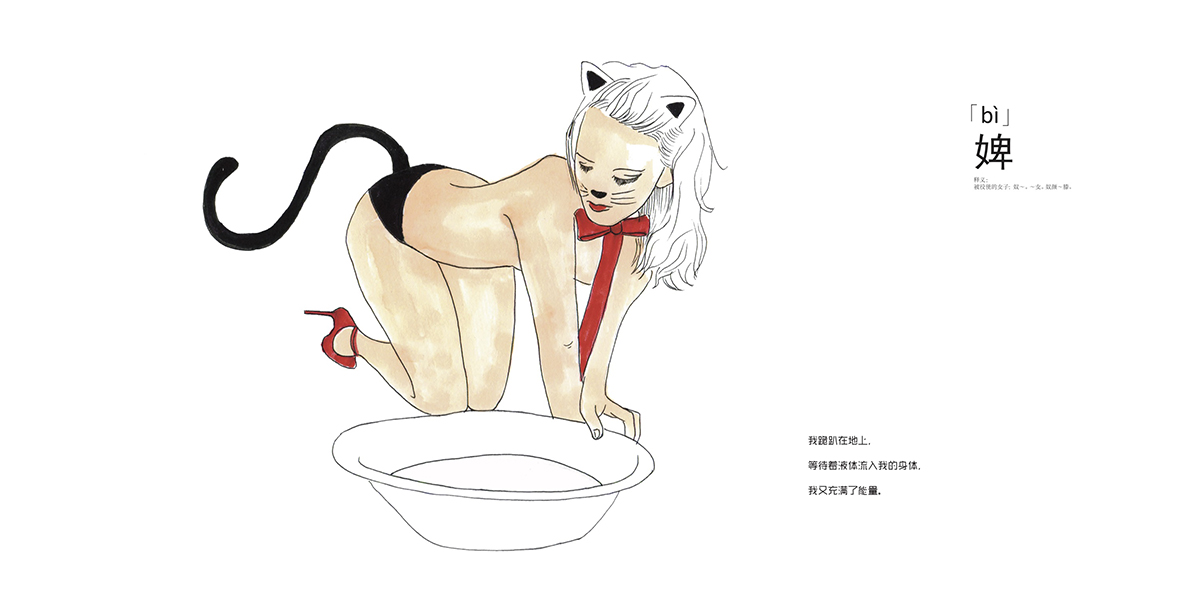
"I lie on the floor, waiting for fluid to enter my body. I’m full of life again."

